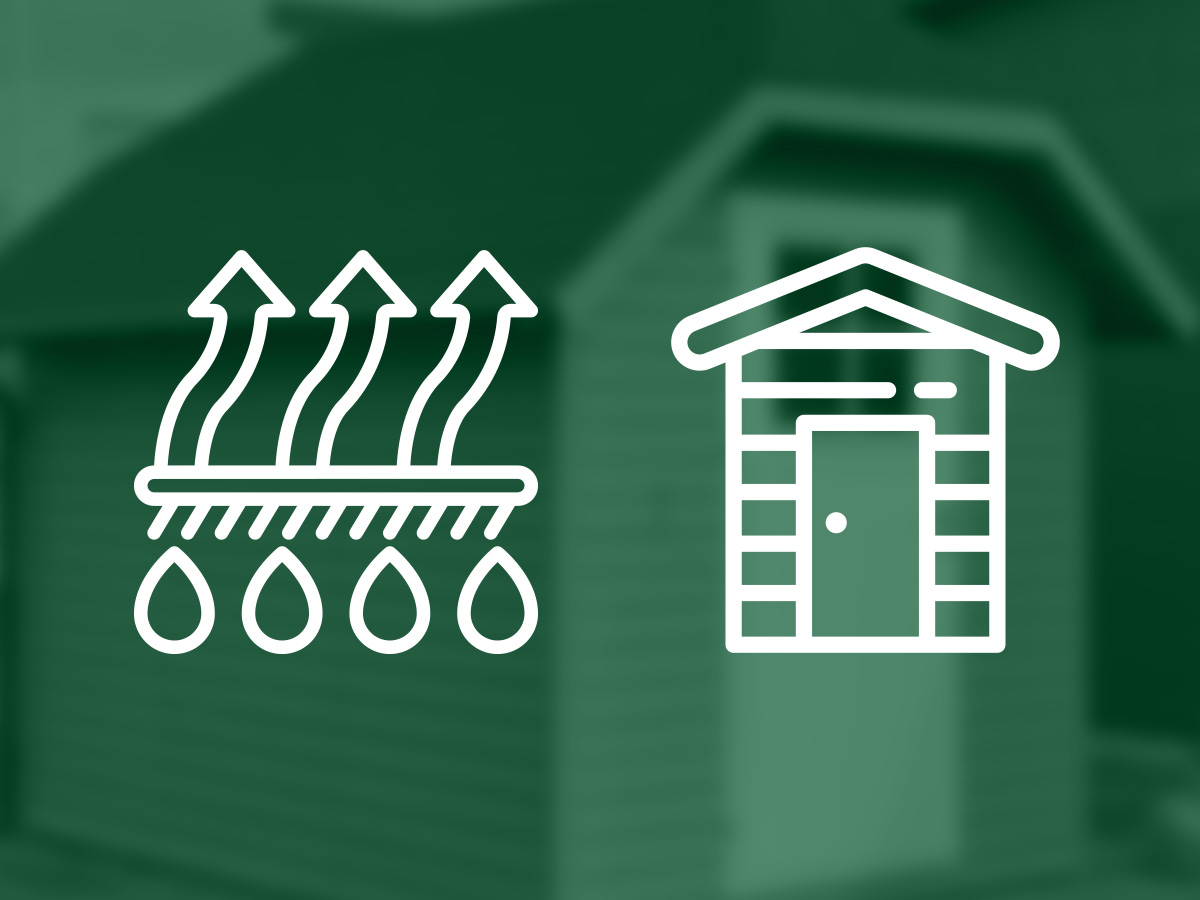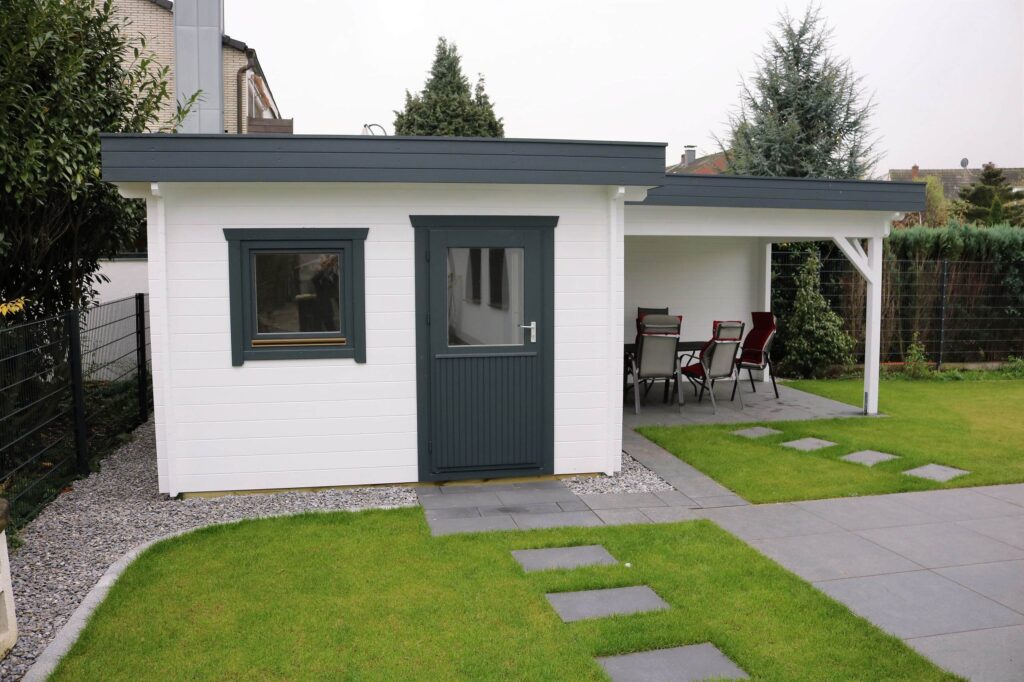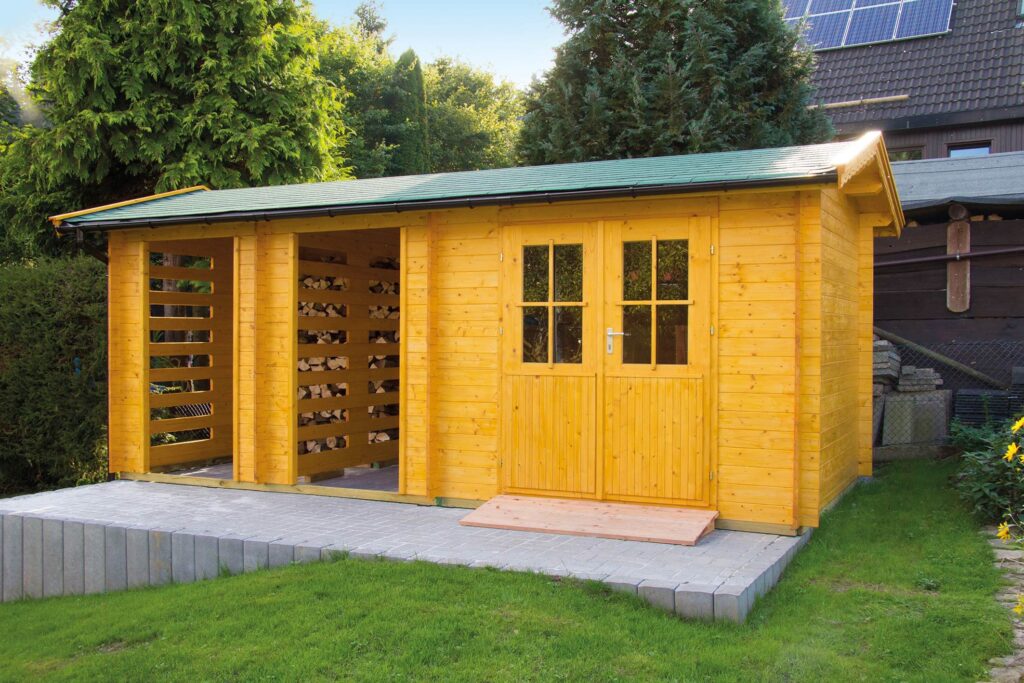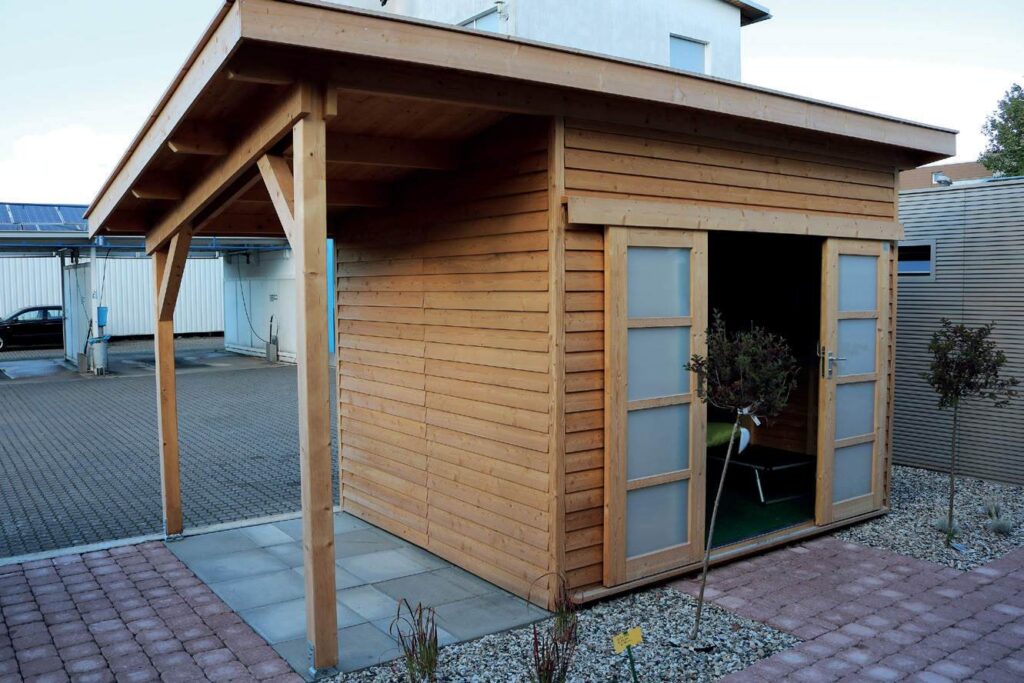

Dry and safe: How to stop condensation in a Shed?
Garden sheds are a fantastic solution for anyone needing extra space for storing tools, relaxation, or DIY work. However, one of the biggest challenges in their construction is protecting against moisture, which can lead to mold, wood rot, and other damage. Particularly important is insulation against moisture from the ground; without proper protection, water can penetrate the structure of the shed, potentially leading to costly repairs in the long run. In this article, we will delve into how to effectively protect your garden shed from rising damp and explain the key methods and materials that can be used for insulation.
Why is damp-proofing your shed so important?
Damp is the biggest threat to any wooden garden building. Whether your shed is used for storage, as a workspace, or as a summerhouse, it is constantly exposed to the elements. Without proper damp-proofing, moisture from the ground can rise into the structure, leading to issues such as wood rot, mould growth, and condensation damp. Over time, this can weaken the timber, damage stored items, and create the perfect environment for white mould and mildew. Protecting your shed with a damp-proof membrane, proper ventilation, and insulation ensures its longevity and prevents costly repairs.
How to prevent rising damp in your garden shed?
To effectively protect your shed from moisture rising from the ground, you need to use the right foundation, damp-proof membranes, and insulation materials. Below are the key steps to ensure long-term protection.
Choosing the right foundation
The foundation is the basis of any building, and its correct selection is key to protecting the structure from ground moisture. The type of foundation depends on the size and purpose of the shed as well as the type of soil on which it is built.
Concrete Slab: A concrete slab is one of the most popular solutions for larger garden sheds in the UK. The slab forms a solid barrier between the shed and the ground, protecting against direct moisture infiltration. Make sure the slab is properly graded so that water does not collect around the structure but instead drains away naturally. It is also advisable to apply an additional protective layer, such as a waterproofing membrane or a damp-proof membrane (DPM) for the shed, before pouring the concrete to further enhance protection.
Pier Foundation: For smaller structures, such as tool sheds or small garden gazebos, pier foundations are a popular option. The shed is supported on a series of point-like concrete piers, which limit contact with the ground. This prevents the wood from coming into direct contact with the soil, significantly reducing the risk of moisture infiltration. This solution is often used for lightweight garden sheds.

Using a moisture barrier
To effectively protect a garden shed from ground moisture, appropriate moisture barriers should be placed between the foundation and the shed. These barriers prevent moisture from seeping from the foundation into the shed’s structure.
PE Foundation Film (Polyethylene): This is a popular method for moisture protection used in both residential buildings and garden sheds. The PE film is placed between the foundation and the shed’s structure, thereby protecting the wood from direct contact with the damp ground. For concrete foundations, the film can also be laid under the concrete to enhance protection further.
Bitumen Felt: Felt is a material that has been used in construction for many years for waterproofing. In garden sheds, felt can be used both on foundations and directly under the structure. The felt creates an effective moisture barrier, especially when combined with other insulating materials.
Drainage Mats: Drainage mats can also be used as an additional layer of protection. These are special materials that allow moisture around the foundation to drain quickly, minimizing the risk of water buildup around the structure.
Proper floor insulation
The floor of a garden shed is one of the key elements that require special attention when protecting against moisture. Moisture can enter not only from the foundation but also through the ground.
EPS Insulation (Polystyrene Foam): Polystyrene foam is a good material for thermal and moisture insulation. Using polystyrene under the floor of a garden shed helps maintain the correct moisture level and prevents moisture from seeping in from the ground. It is important to choose polystyrene with the appropriate density to ensure durability and stability.
XPS Insulation Boards:
Extruded polystyrene boards (XPS) are an alternative to polystyrene foam. They offer better insulation properties and are more resistant to moisture. XPS does not absorb water, making it ideal for insulating garden shed floors.
Floor Ventilation: To prevent moisture buildup under the floor, proper ventilation is recommended. A ventilation space beneath the floor allows for free air circulation, which helps moisture evaporate more quickly.This helps to stop condensation in the shed and reduce the risk of mold buildup.
Protecting walls and structure
The walls of a garden shed, like the floor, are exposed to moisture. Even if the shed is well-protected from below, moisture can still penetrate the walls, especially in areas near the ground.
Wood Treatment: Treating the wood is the basic method for protecting garden shed elements against moisture. Wood preservatives contain chemicals that protect against fungi, mold, and insects. Regular treatment is crucial to ensuring that the wood retains its properties and moisture resistance.
Exterior Protective Coatings: Protective coatings for wood provide an additional layer against moisture. Besides their aesthetic function, these coatings create a barrier that prevents water from penetrating the wood. It is important to choose coatings that are suitable for outdoor use and resistant to weather conditions.Using an anti condensation paint for metal sheds is also beneficial in stopping metal shed condensation.
Flashing: In vulnerable areas, such as the transition between the wall and foundation or around windows, flashing is recommended. Flashing prevents rainwater and moisture from entering these particularly sensitive areas.
Proper rainwater drainage
Rainwater is another factor through which moisture can penetrate the garden shed. Therefore, it is vital to ensure that water from the roof is effectively drained as far away from the foundation as possible.
Gutters and Downspouts: Installing gutters is essential to protect your shed from rainwater. Gutters collect water from the roof and drain it through downspouts. It is important that the ends of the pipes are directed away from the foundation to avoid flooding around the shed. Adding a vapor barrier under the foundation can provide extra protection from moisture seeping up.
Linear Drainage: For larger buildings, consider installing linear drainage around the shed. These systems collect water from the surface and channel it away, minimizing the risk of foundation flooding.
Soil Drainage: In areas with high groundwater levels or poorly permeable soil (e.g., clay), it may be worth considering a drainage system. By laying drainage pipes in appropriate locations, excess water can be effectively diverted away from the foundation.
Some practical tips to help you keep you garden shed dry
1. Keep your tools and stored items dry in your shed
Even with the best damp-proofing, moisture can still affect tools, equipment, and stored items if they are not properly protected. Here’s how to keep everything in your shed dry and free from rust or mould.
Use airtight storage containers
Store tools, papers, fabrics, and other moisture-sensitive items in sealed plastic boxes with tight-fitting lids. Vacuum-sealed bags are ideal for soft items like cushions, blankets, or clothes. If you store metal tools, use a metal toolbox with silica gel packs inside to prevent rust formation.
Keep tools off the floor
Store tools on wall-mounted pegboards or inside lockable cabinets rather than leaving them on the ground, where moisture levels are higher. Use shelving units made of metal or treated wood to improve airflow around stored items.
Add moisture absorbers
Place silica gel packs, activated charcoal, or moisture-absorbing crystals inside cabinets or storage boxes. For larger sheds, consider using a small, rechargeable dehumidifier.
By keeping tools organised, off the floor, and in sealed containers, you can protect them from damp, rust, and corrosion, even in winter months.
2. Choose the best heating option for your shed
During colder months, a slight increase in temperature can help reduce condensation and keep your shed dry. Here are safe and effective heating options for a shed.
Use tubular heaters
Tubular heaters, also called frost heaters, provide gentle warmth without overheating. They are low-energy, safe to leave unattended, and ideal for small or medium-sized sheds.
Install a solar air heater
A solar-powered air heater uses sunlight to warm the shed during the day while also improving ventilation. This is a great option for off-grid sheds with no electricity supply, offering warmth with no running costs.
Consider a wood-burning stove (with safety measures)
If professionally installed with a proper flue and carbon monoxide detector, a small wood burner can be a great heating solution for larger sheds or workshops. Always ensure good ventilation and follow fire safety guidelines.
Avoid paraffin or Calor Gas heaters, as they release moisture into the air and increase condensation problems.
Using a low-energy heater or a solar-powered system will help keep your shed warm and prevent damp-related issues in winter.
3. Improve shed ventilation to prevent condensation
Good ventilation is key to preventing condensation and keeping your shed free from damp and mould. Here are the best ways to improve airflow.
Install static vents
Fit breathable, mesh-backed vents on opposite walls to allow fresh air to circulate while keeping out insects and debris. Position one vent near the floor and another higher up to promote natural airflow.
Use a solar-powered ventilation fan
A solar-powered shed fan helps remove humid air and prevent condensation, especially in winter. It works automatically when exposed to sunlight and is ideal for sheds without electricity.
Keep doors and windows open when possible
Open windows or doors for at least 10–15 minutes a few times a week to allow excess moisture to escape. If your shed lacks windows, consider installing louvre vents to improve air movement.
By combining passive ventilation with active airflow solutions, you can effectively reduce condensation and keep your shed dry all year round.
Common mistakes when insulating a garden shed
Insulating a garden shed requires care and the use of appropriate materials. Unfortunately, common mistakes can lead to moisture issues, even if initial protective measures were taken. One of the most frequent errors is the lack of a proper insulation layer on the foundation. Even very solid foundations can fail if a membrane or waterproofing layer is not applied between the foundation and the structure. As a result, moisture can penetrate the wooden elements, leading to wood rot over time, especially in the lower parts of the shed. Another mistake is insufficient floor ventilation. In wooden sheds, a lack of adequate air circulation beneath the structure promotes moisture buildup, increasing the risk of mold and mildew. Good ventilation allows for moisture evaporation, which is crucial for the structure’s longevity. Wood treatment is another important, but often neglected, step. If the wood is not properly treated, even small amounts of moisture can quickly lead to fungal growth and material decay, resulting in structural damage and costly repairs. To damp proof a shed effectively, ensure you use the appropriate moisture barriers and treat all wooden surfaces thoroughly.



